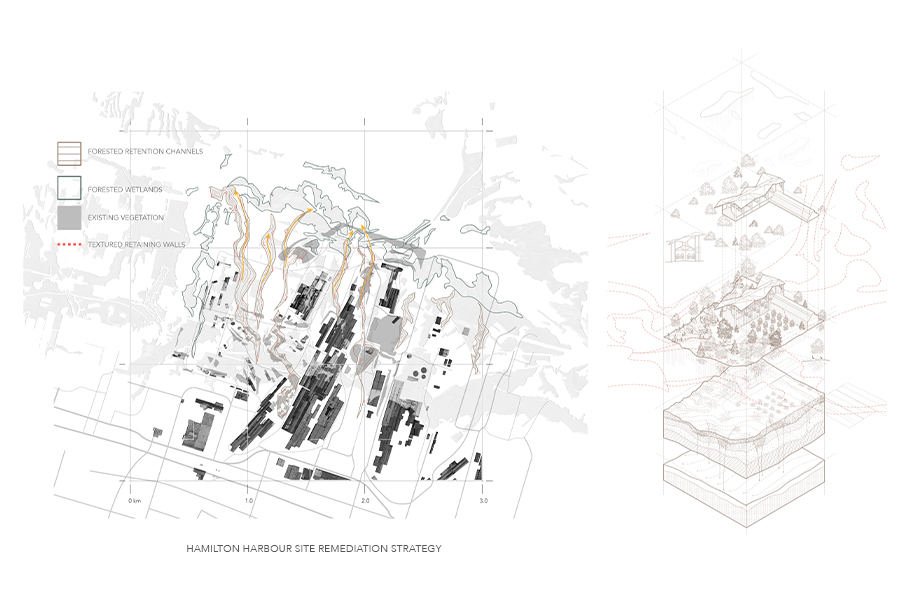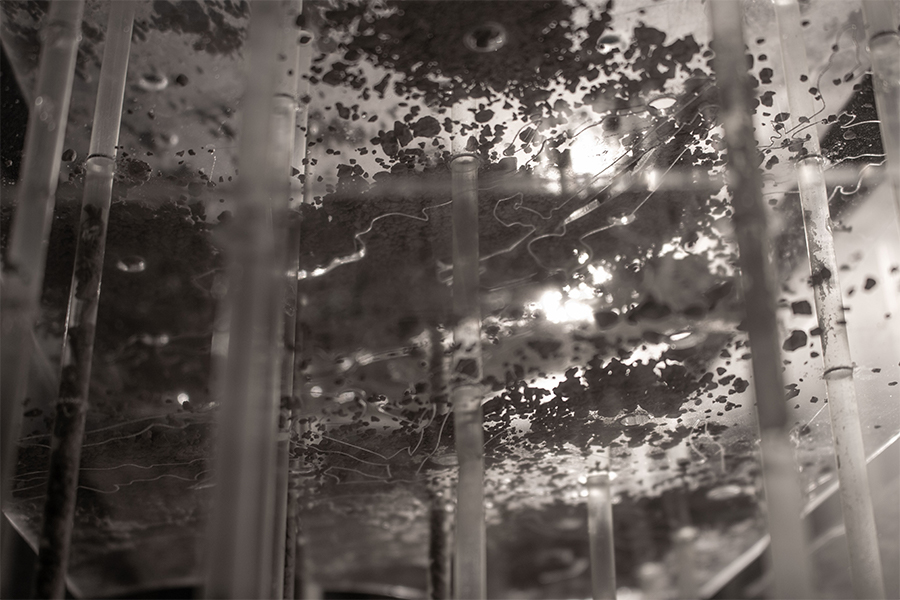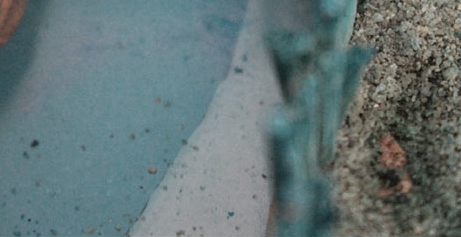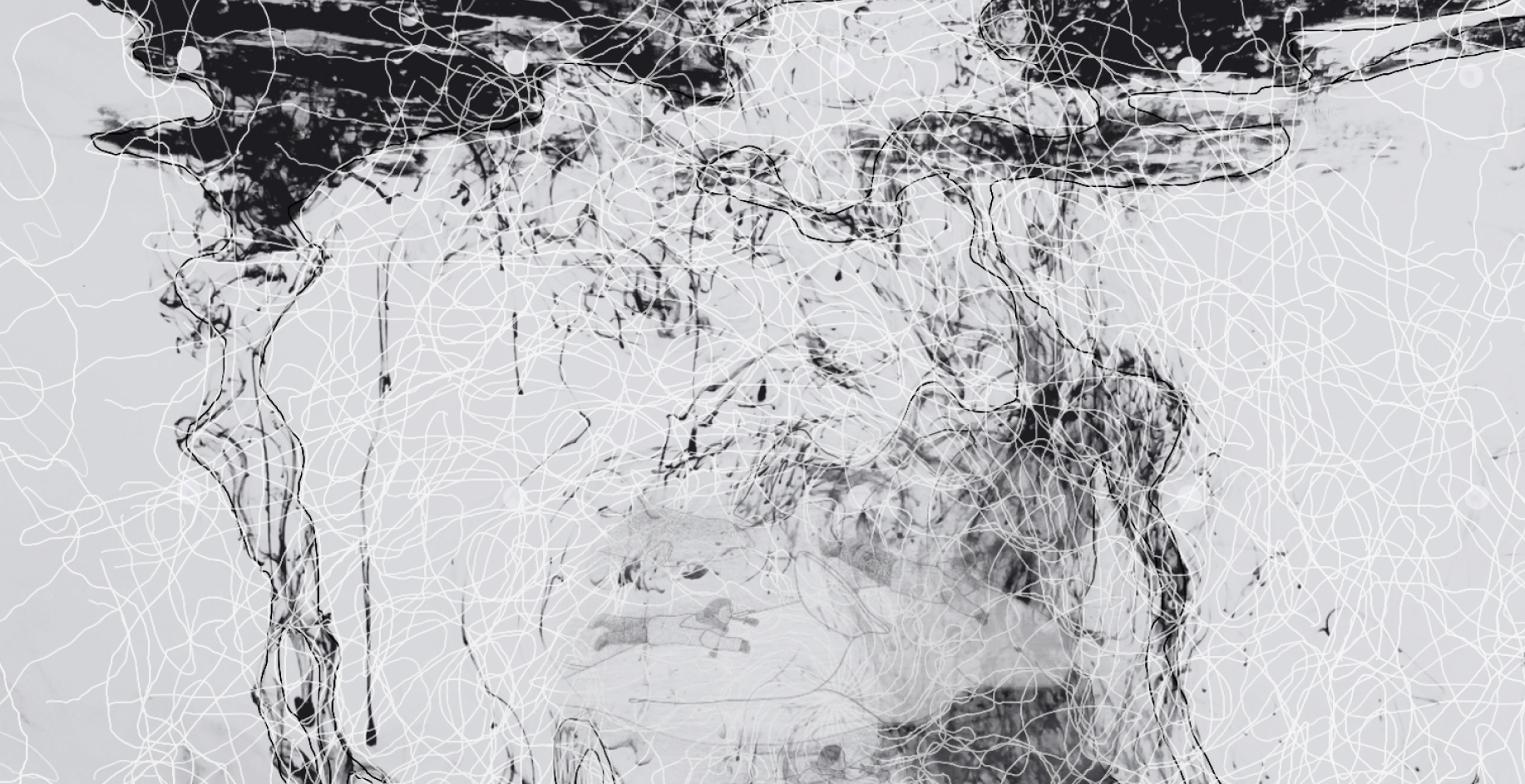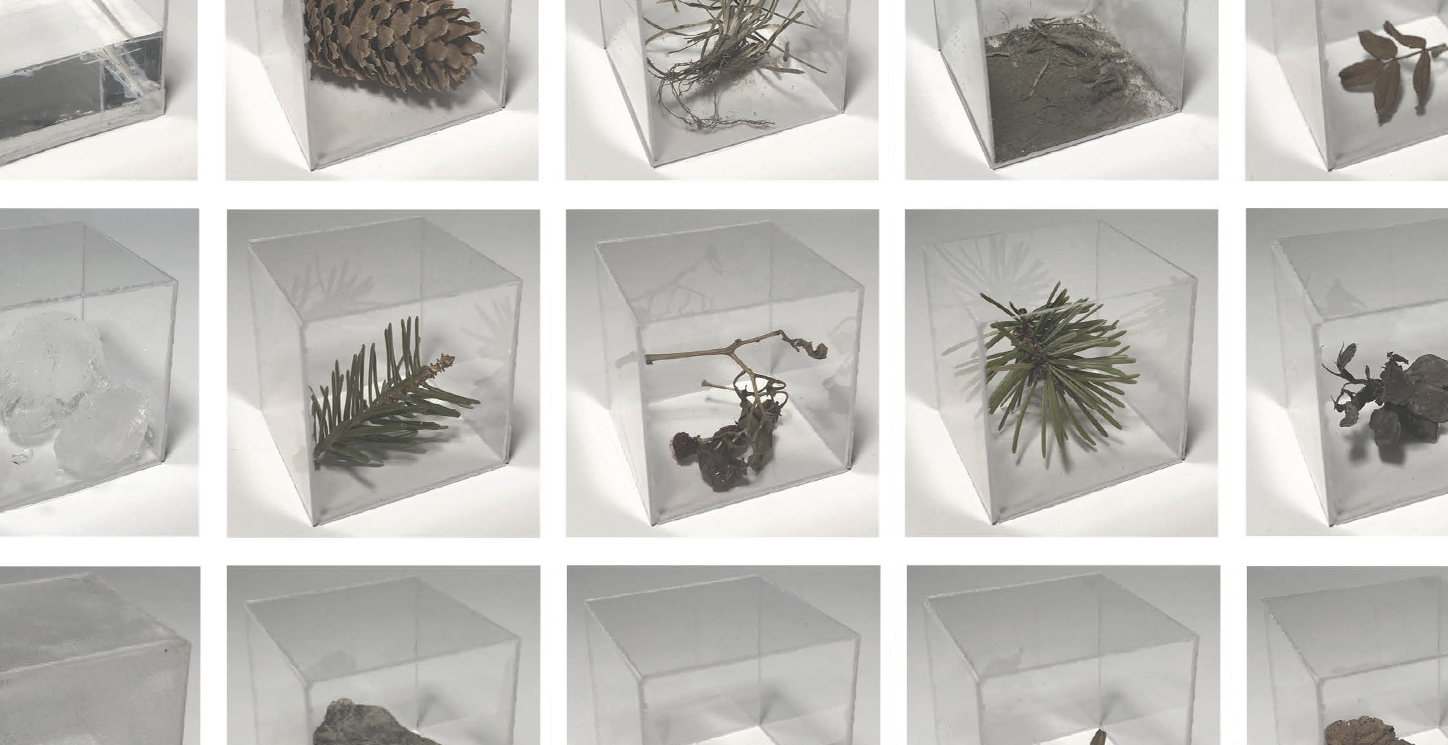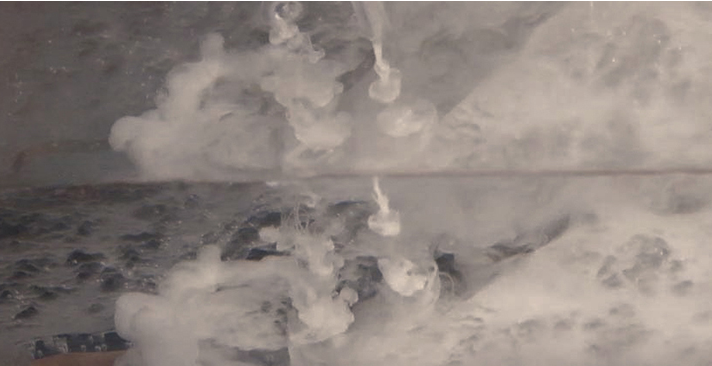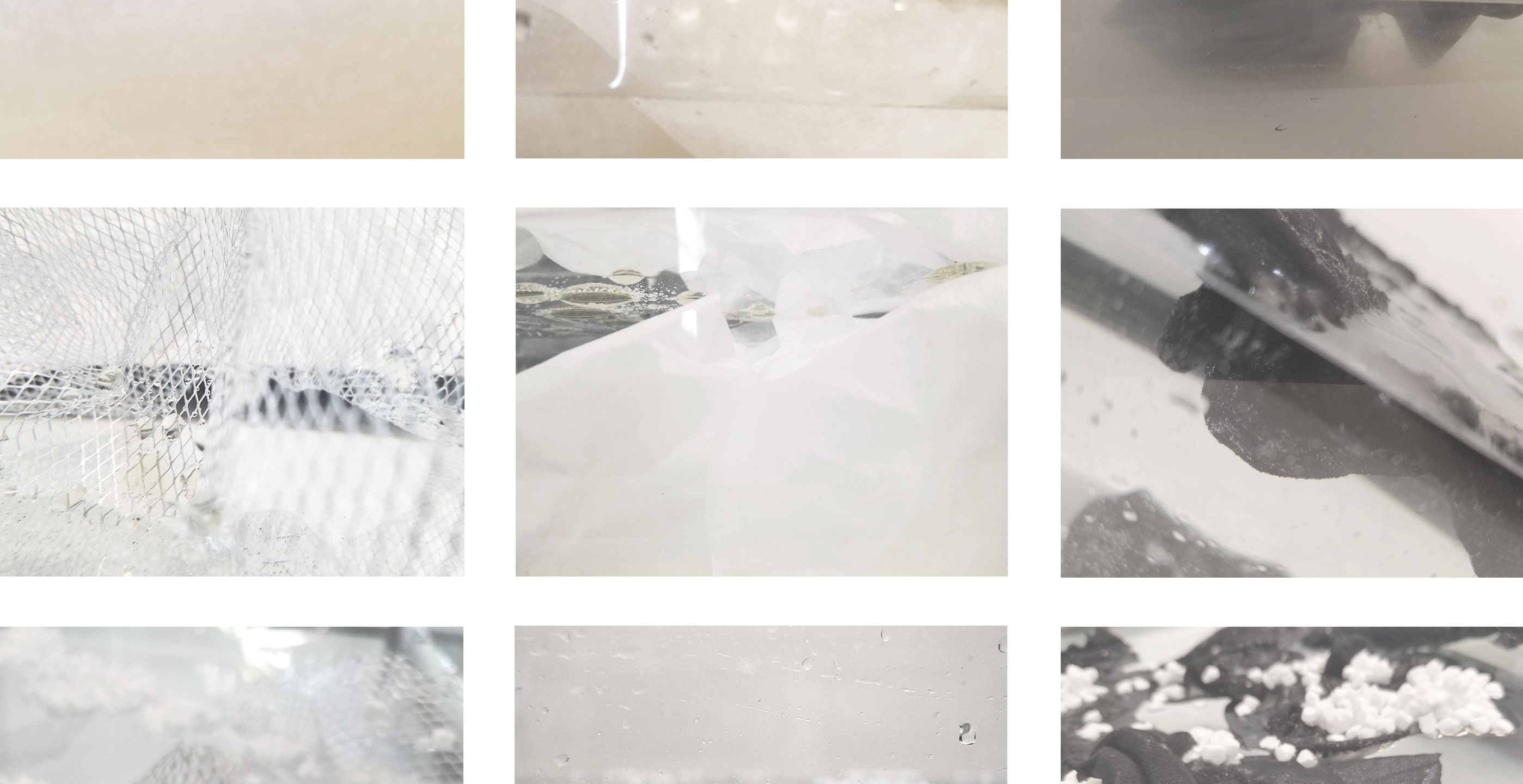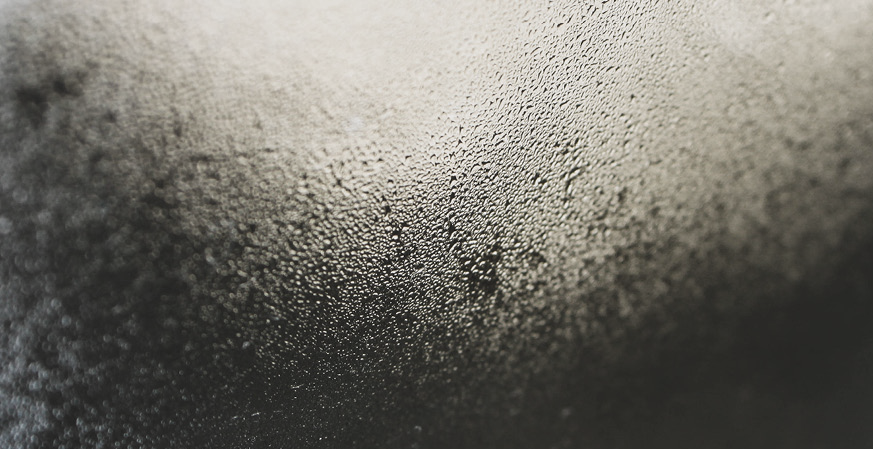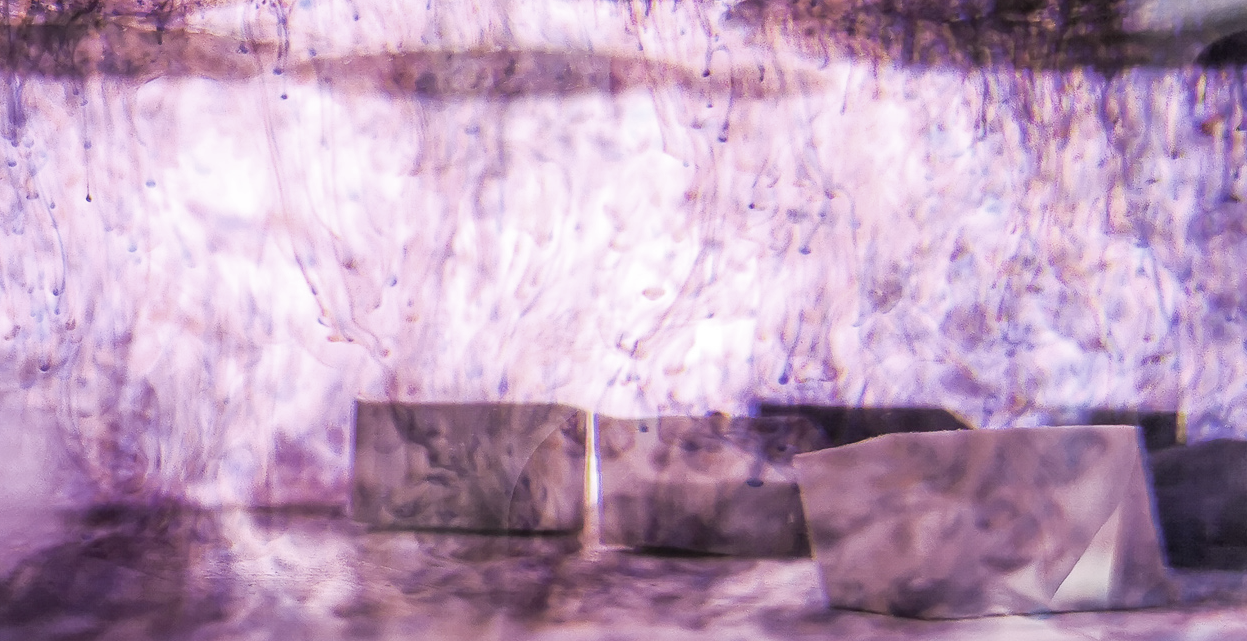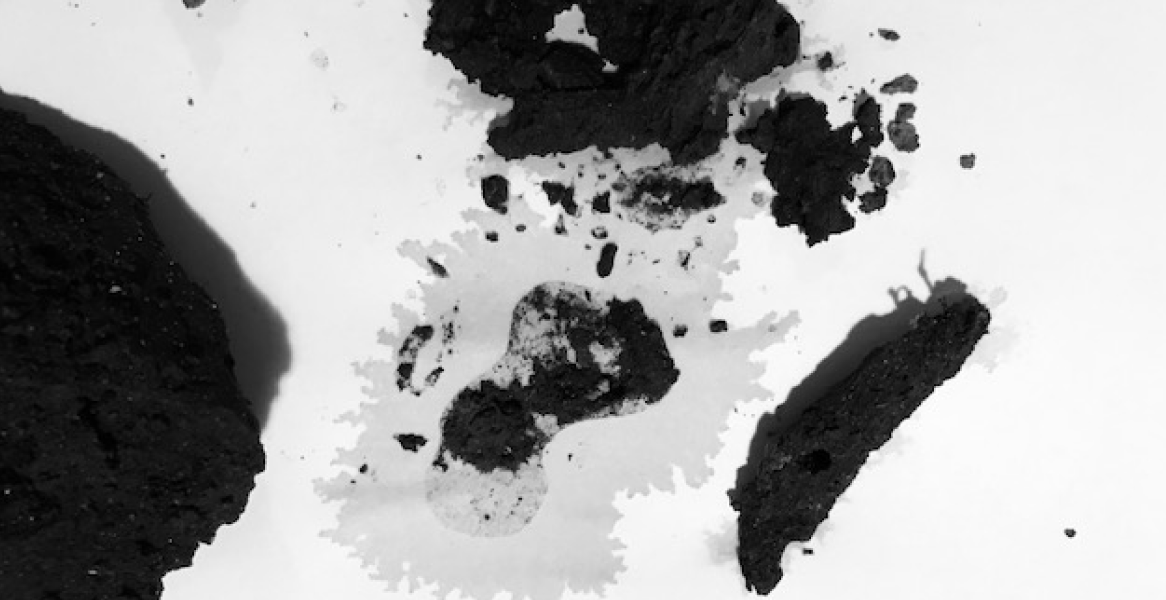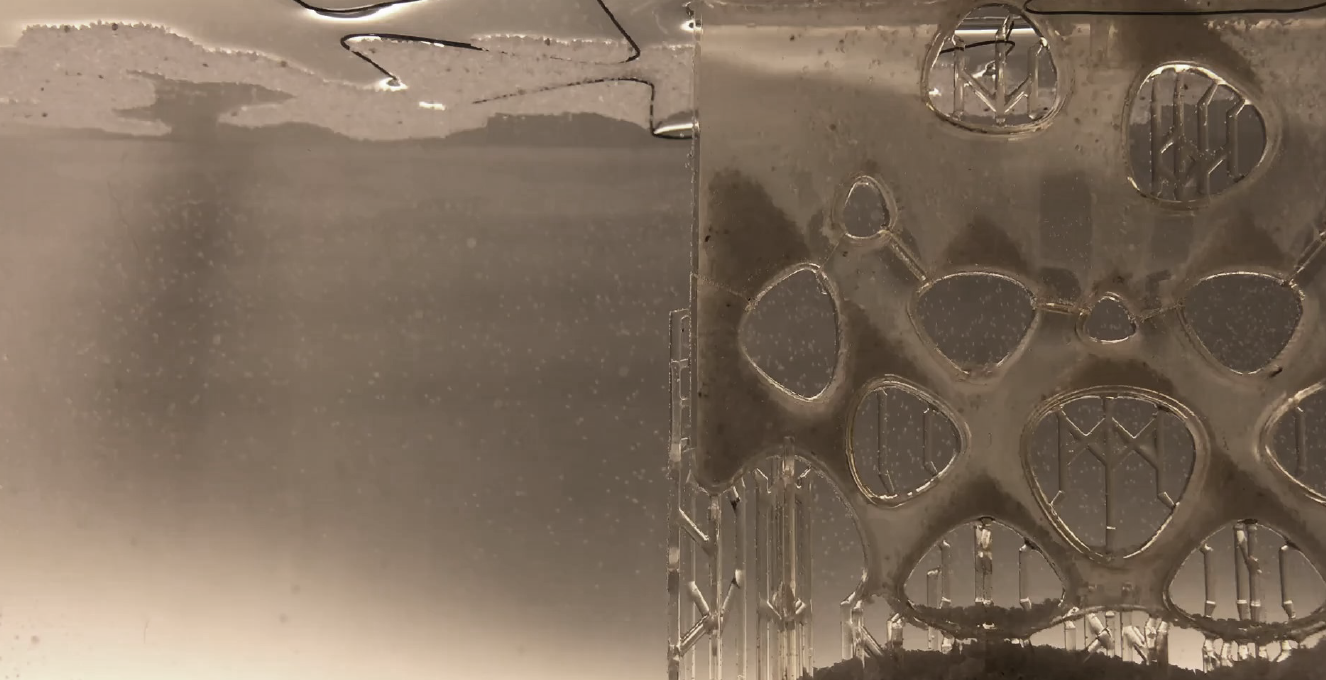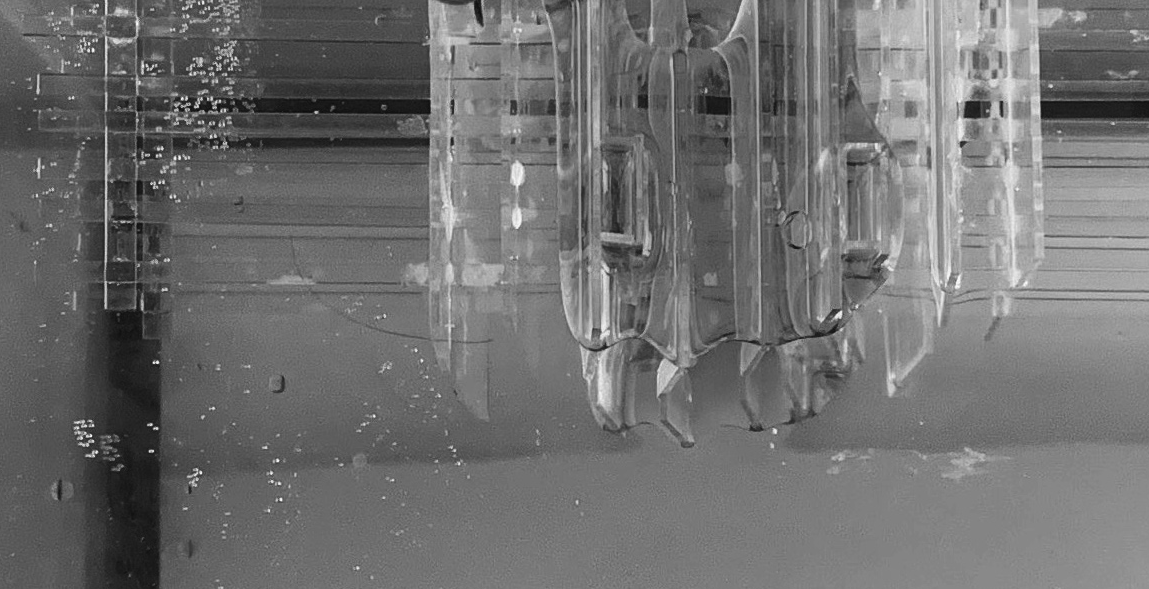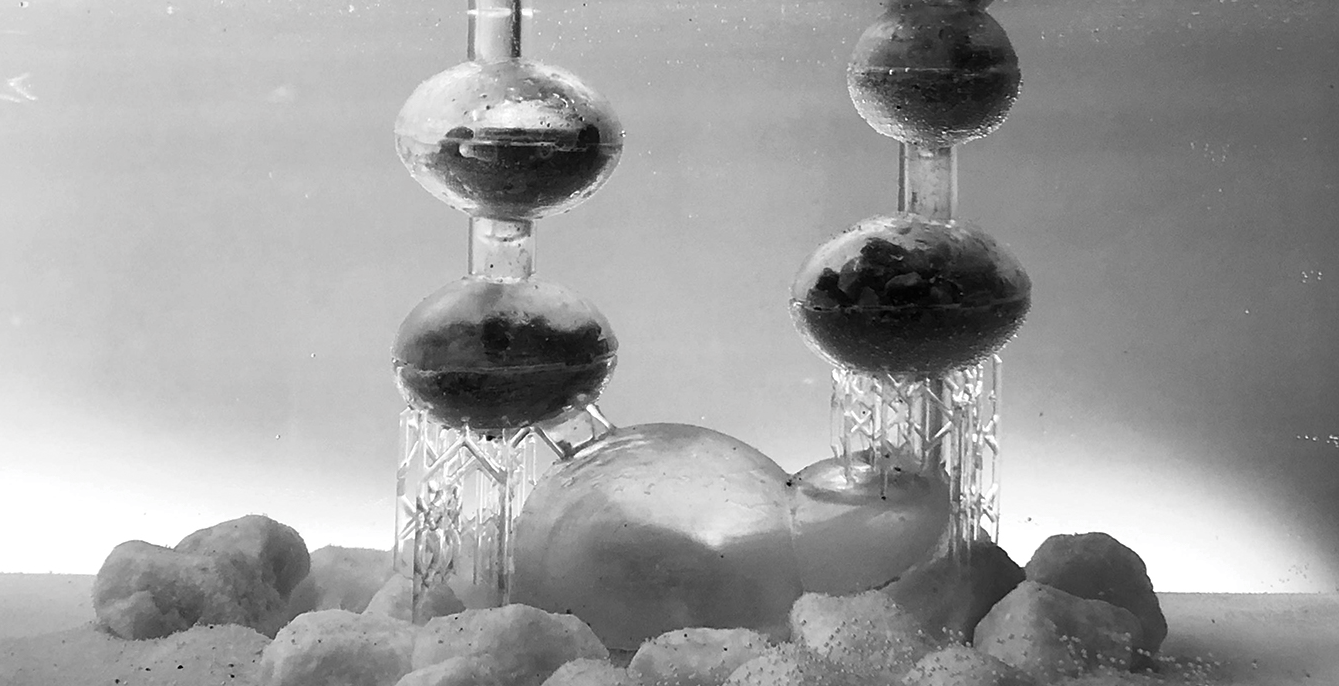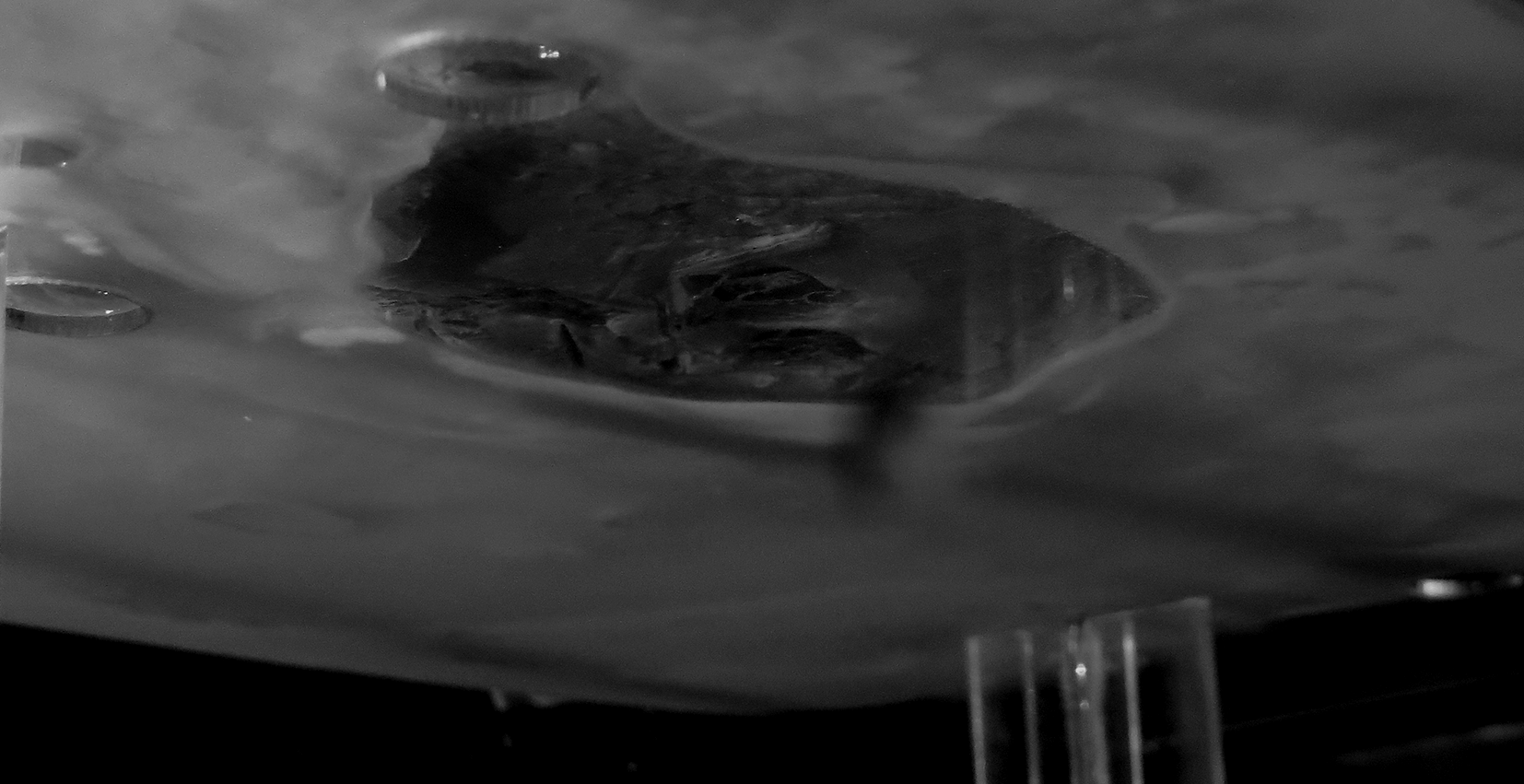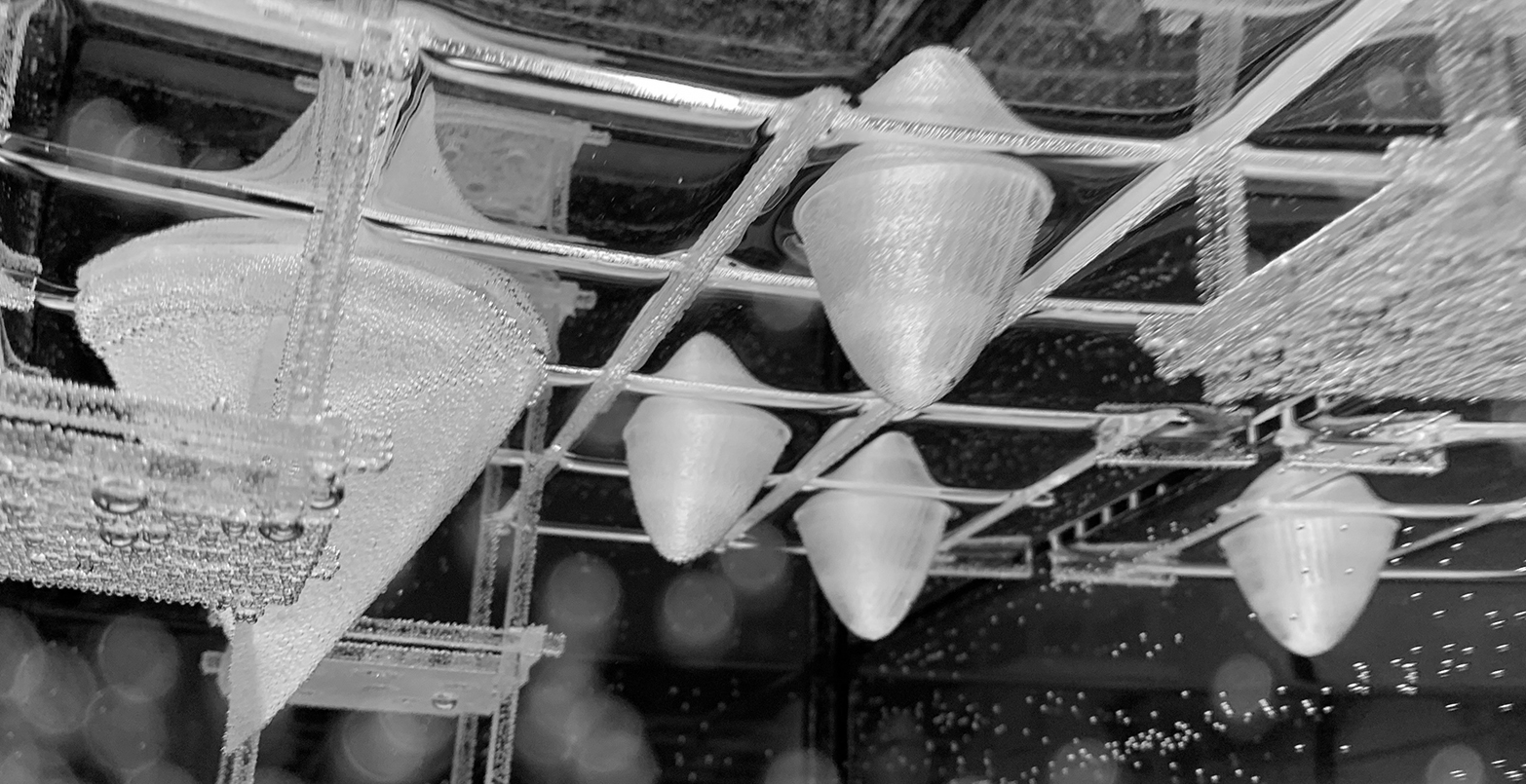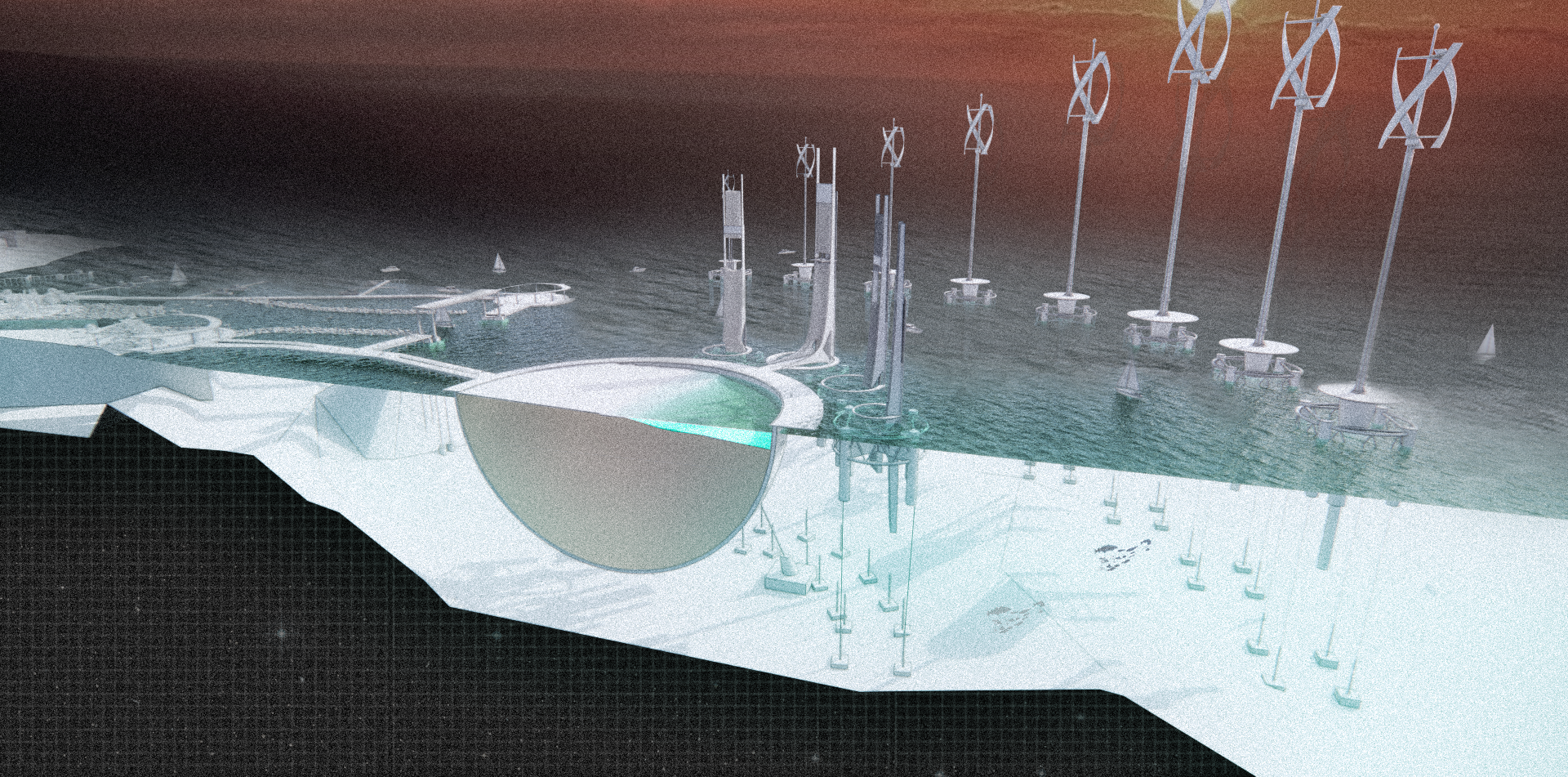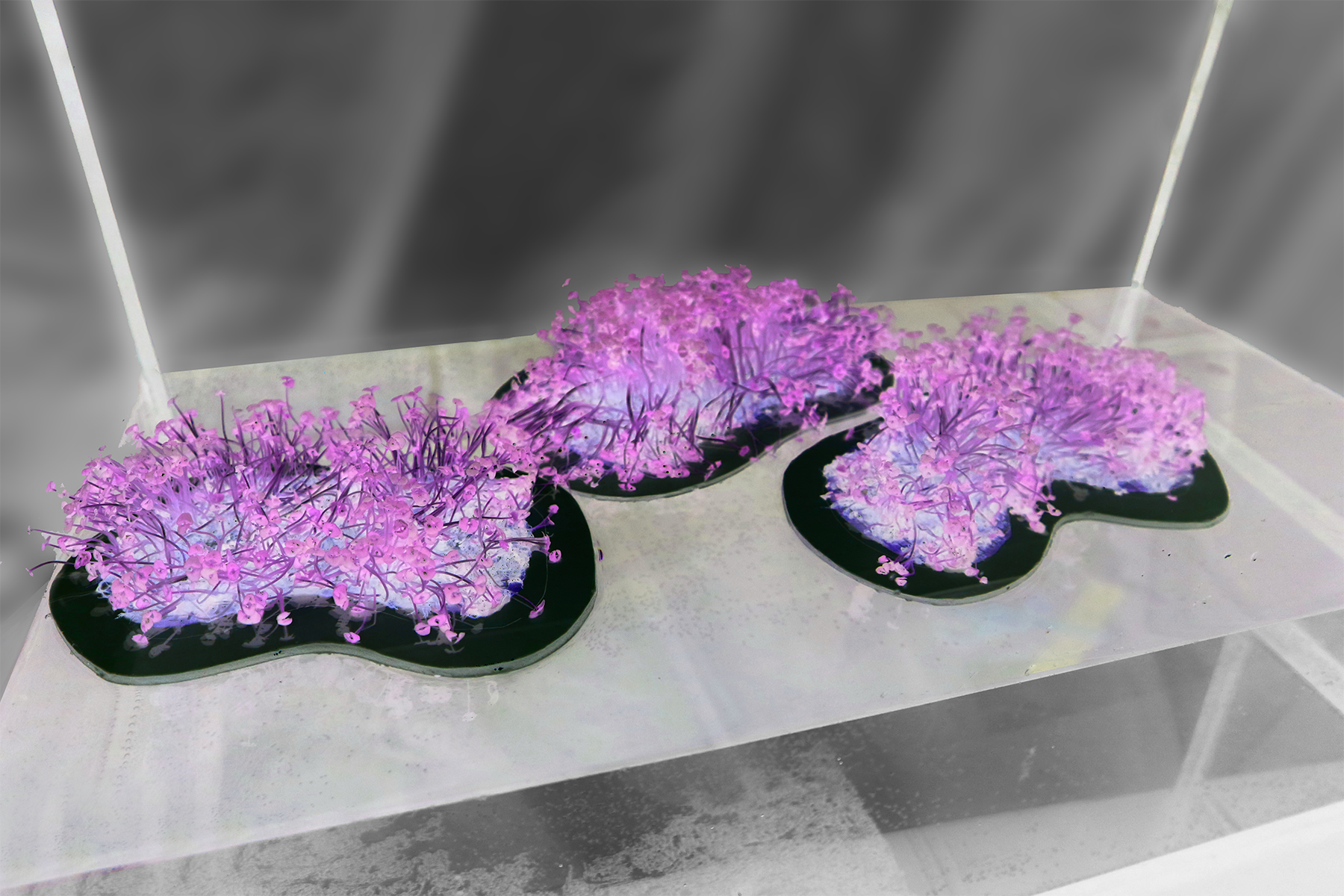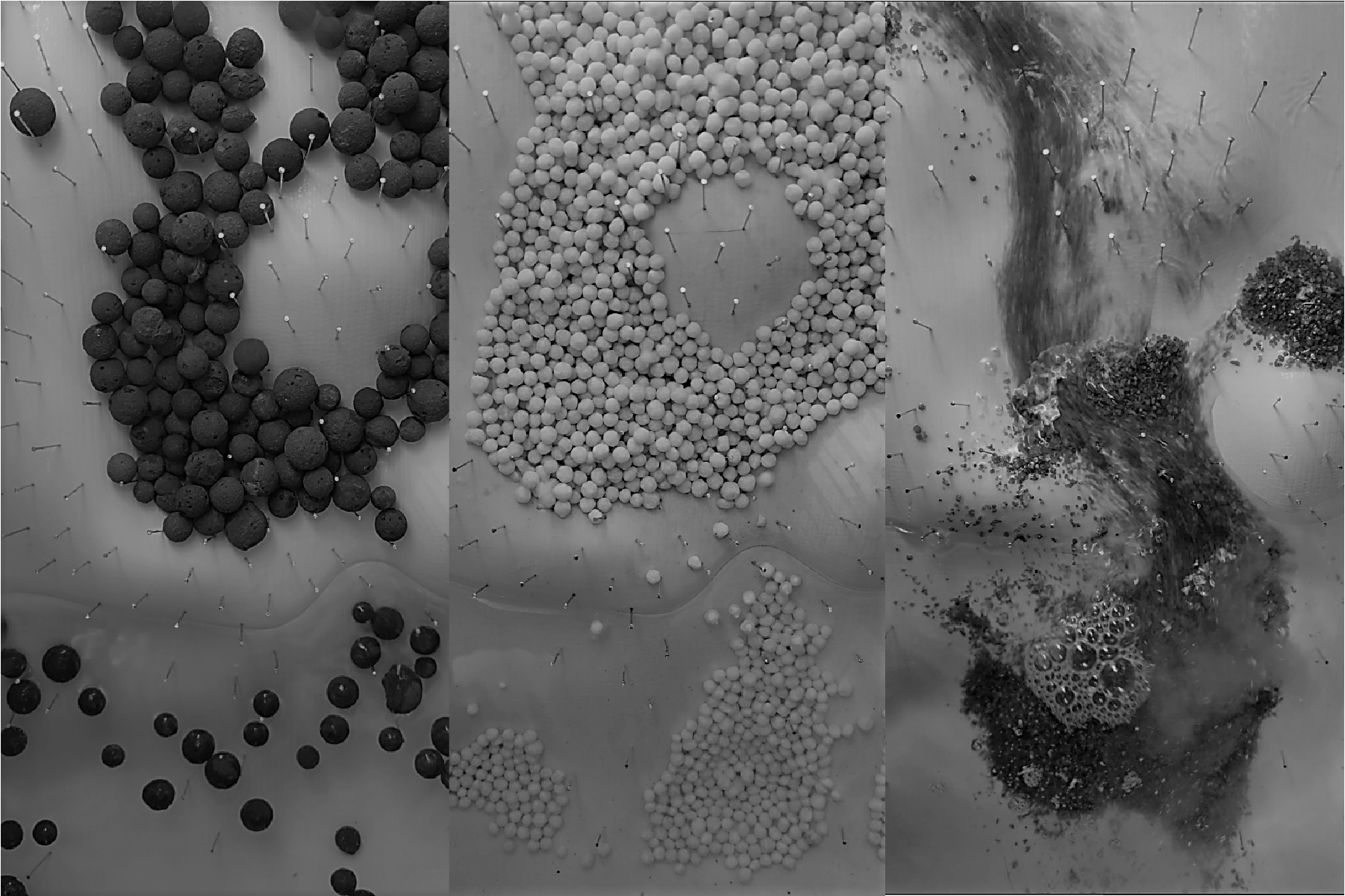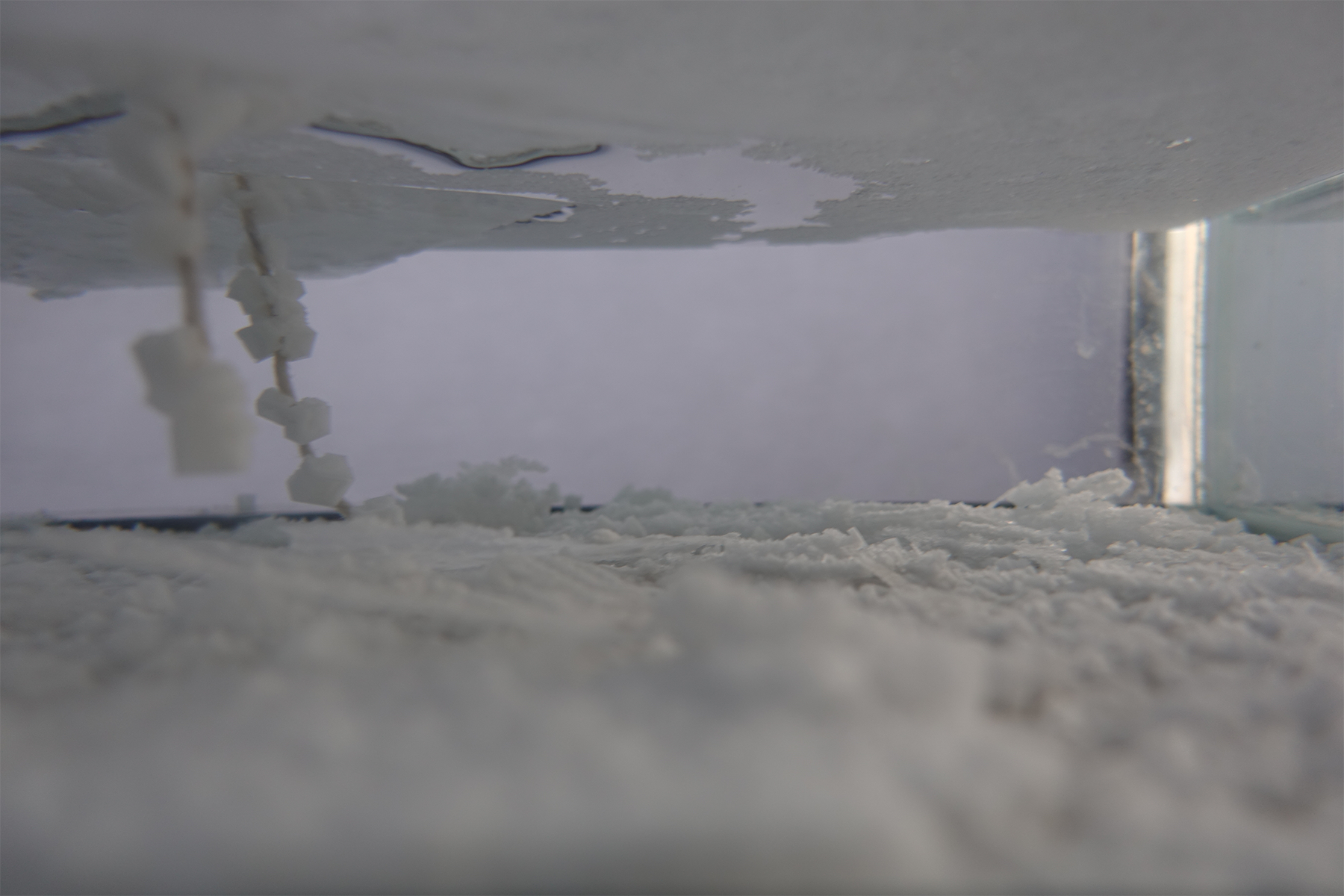Jessica Babe
Tank Worlds : Hamilton Harbour
Revealing the Urban Woodland
This project envisions a future urban ecosystem in which the industrialized landscape of Hamilton Harbour functions as a re-wilded landscape of urban forestry. A series of cartographic studies displaced neighbouring woodland landscapes and transposed them onto the industrial site. The project took this premise seriously, bringing the regional woodland ecology to the Hamilton Harbour through a process of rewilding and expansion of existing pockets of greenspace found in the in-between spaces of the Stelco Steel industrial buildings. In parallel, the shore is re-naturalized through softening of existing hardscape. The new shoreline merges land and marine ecologies to create an ecological buffer zone of forested wetland to enhance natural mechanisms of flood management, soil remediation, and diversification of native ecologies. An existing industrial building is transformed into a greenhouse with water collecting roof, enabling cultivation of seedlings for planting later within the site or the wider urban context.
A series of model studies explore resurfacing as a means of increasing water permeability and infiltration. The studies also focus on wider water cycles from within the tree canopy level, upon ground-surfacing materials, through soil, and eventually back to the harbour or the water table through processes of infiltration, collection and retention.




